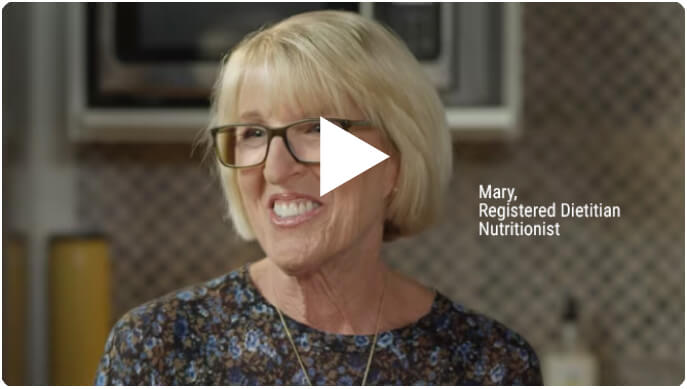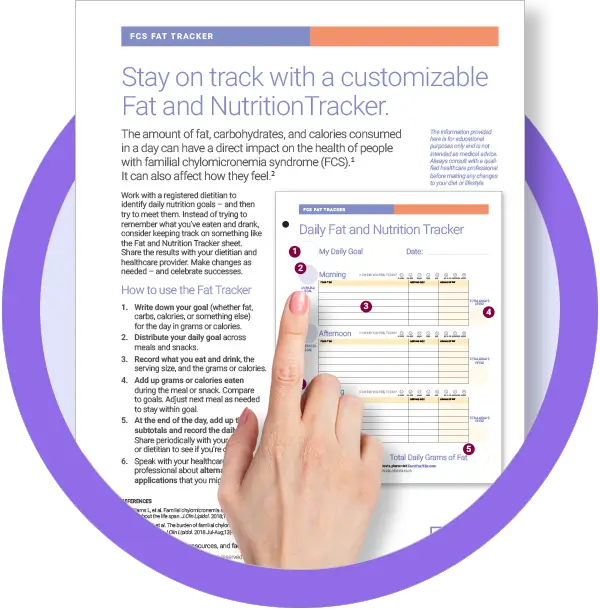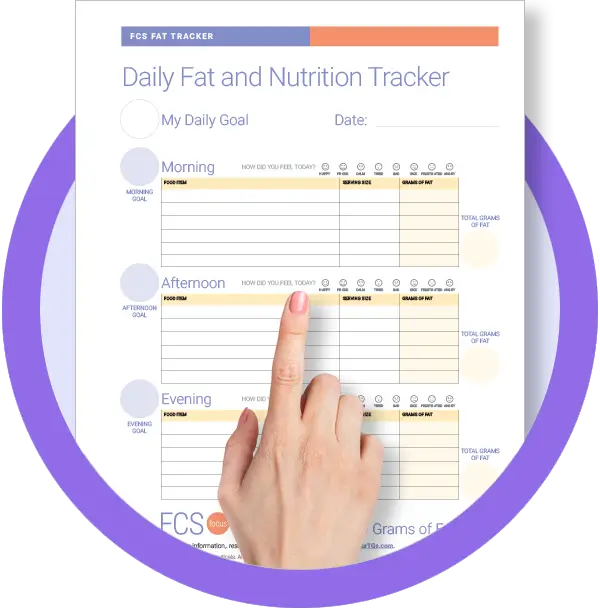How can a registered dietitian (RD) help with familial chylomicronemia syndrome (FCS)?
An RD can help build a food plan that fits the requirements of FCS and severe hypertriglyceridemia (sHTG) – as well as your unique food tastes.
A registered dietitian (RD or RDN) can help you create meal plans that allow you to enjoy eating, while also giving you the nutrients and calories you need for a healthy life, in a way that fits your lifestyle and family.
Registered dietitians are highly trained and knowledgeable. They must meet rigorous certification standards and do a lot more than make lists of foods to eat. They can help you:
- Find ways to enjoy the foods you like.
- Blend healthier eating into your lifestyle.
- Stay motivated.
Anyone can call themselves a dietitian or nutritionist, even with little or no training. Make sure you work with someone who has the credentials of RD or RDN by checking with the Academy of Nutrition and Dietetics.
Ask your doctor to recommend a registered dietitian. The Academy of Nutrition and Dietetics also has a tool to help you find a registered dietitian nutritionist near you.
Although KnowYourTGS.com offers some tips on nutrition for FCS, studies have shown that people who get individual support from an RD or RDN have more success than people who follow standard advice.

Partnering with your registered dietitian
When you meet with a registered dietitian for the first time, he or she will want to understand you, your lifestyle, and your concerns. The nutrition plan you develop together can help you live a healthier life and eat foods that can lower your triglyceride levels and control other health concerns by:
- Reducing or eliminating alcohol.
- Transitioning to and maintaining a low-fat meal plan.
- Meeting nutritional requirements.
- Reducing simple carbs and added sugars.
- Choosing whole grains in place of refined grains.
- Weight management and physical activity.
- Food selection and meal preparation to fit your lifestyle and your tastes.
What to bring to your first appointment with the registered dietitian
To make the most of your appointment, bring along:
- FCS or sHTG information and facts (for reference), such as the link to this website.
- A record of all food and drinks you consumed for three non-consecutive days.
- The results of your most recent blood test and lipid panel, which should include triglyceride levels, cholesterol levels, blood sugar levels, etc.
Click the circles below to download the Daily Fat and Nutrition Tracker fact sheets. Read the instructions and use the tracker form to capture your daily fat consumption (in grams) in advance of meetings with your healthcare professionals.


Important: There is no one-size-fits-all food plan for people with FCS or sHTG. It will take time, patience, and food tracking to fully appreciate what an FCS or sHTG diagnosis means for you, your diet, your lifestyle, and your family.
Checking in with your registered dietitian
Even if you know how to eat low-fat meals, you'll want to regularly check in with your dietitian to make sure you're getting the nutrients your body needs.
- Advocate for your own health.
- Find out if you can call, text, or email questions to your dietitian.
- Ask how frequently you should come back for follow-up.
